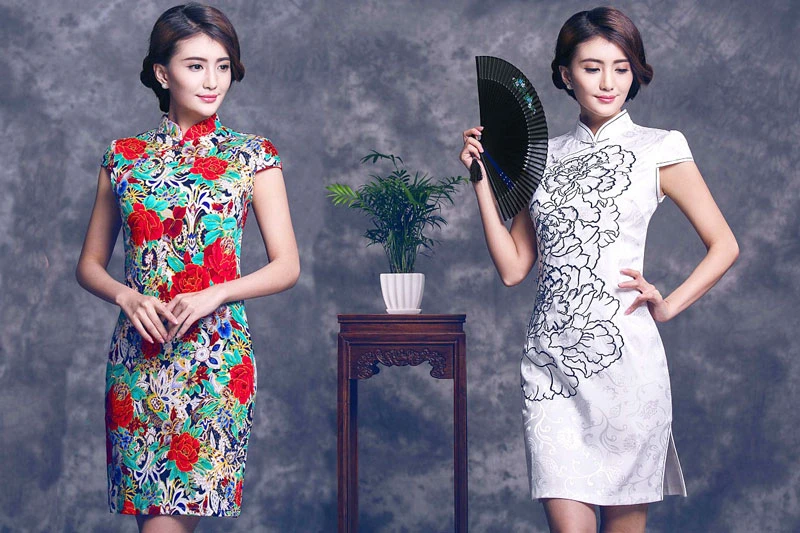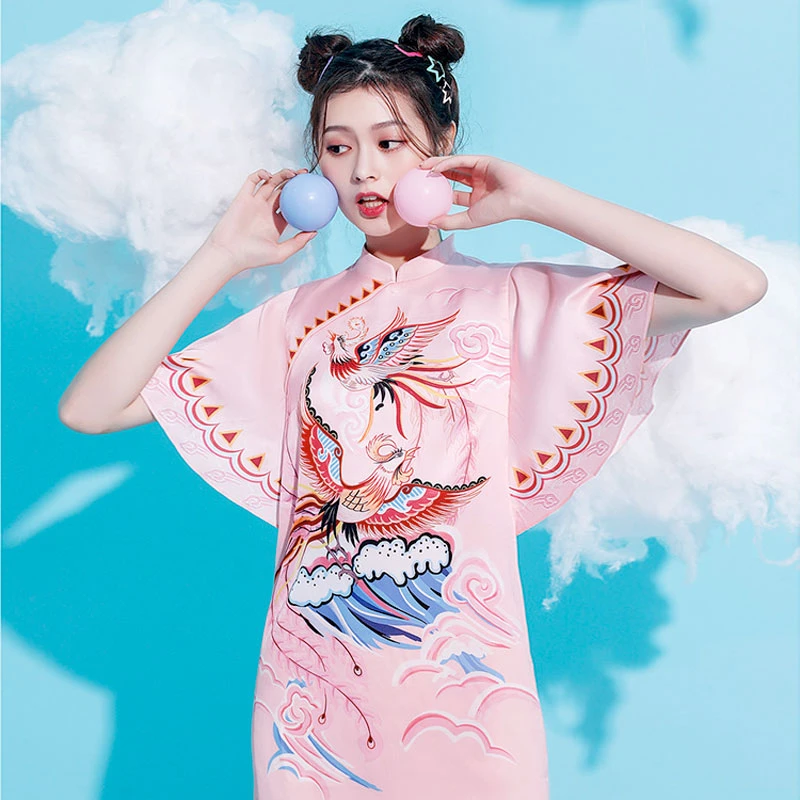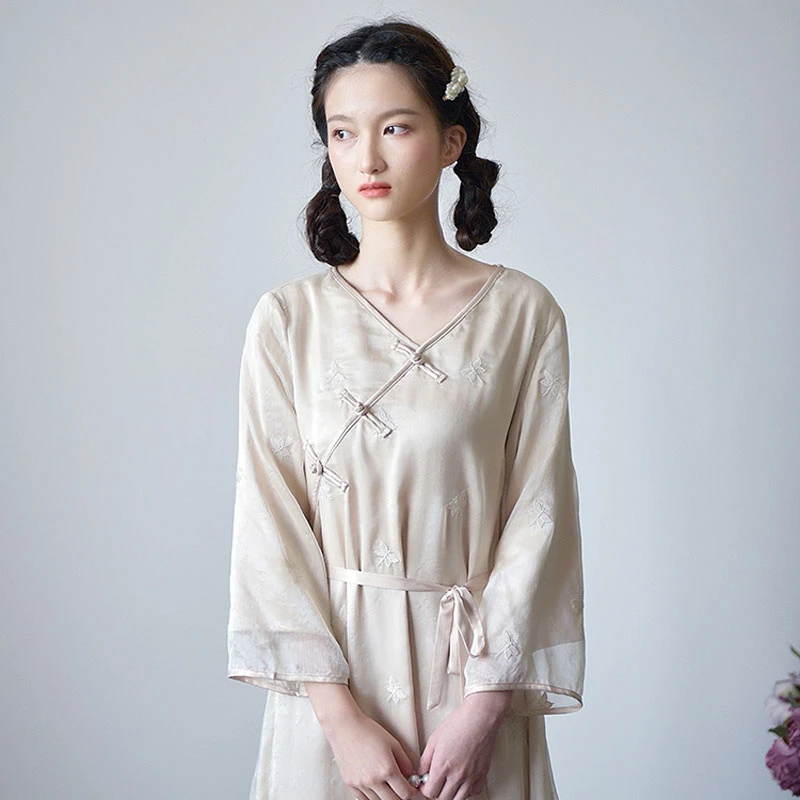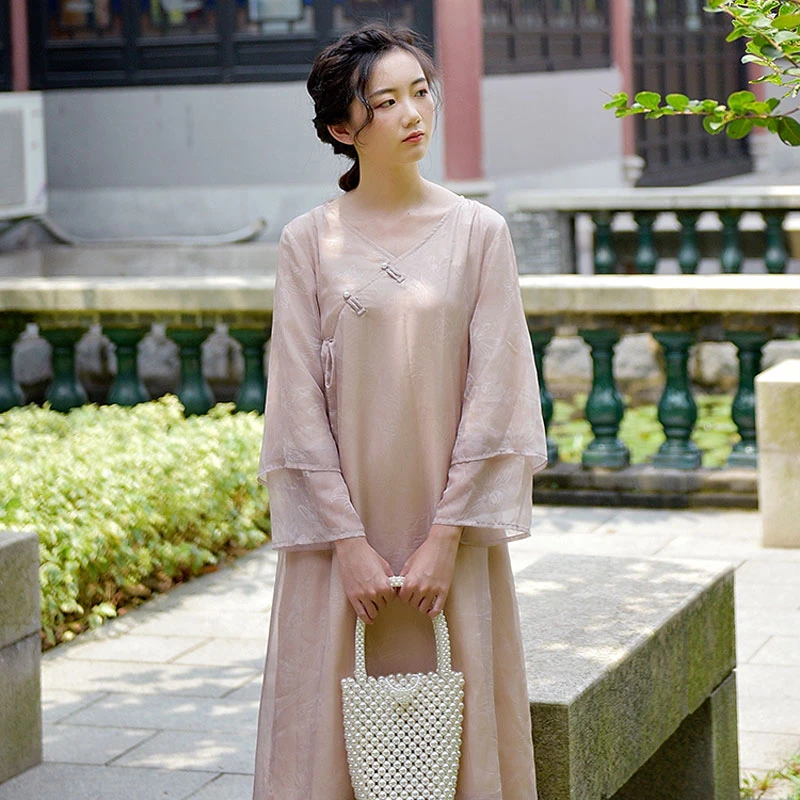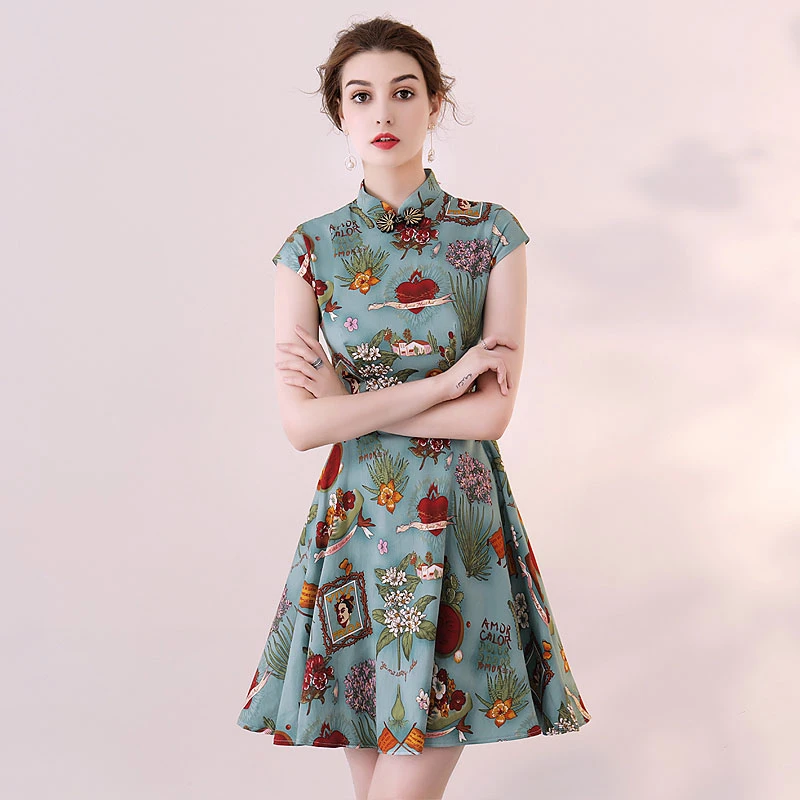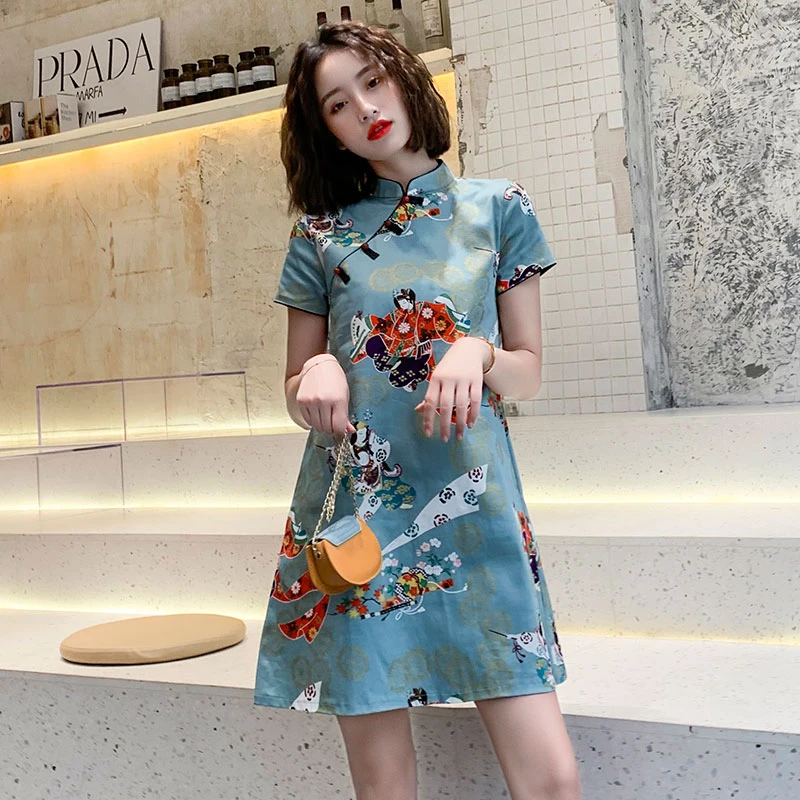The Qipao dress is eternal, making a sleekly curvy silhouette on your figure once you wear it. The cheongsam or qipao dresses show breath-taking sophistication and femininity that is apt for any event.
The canto, also recognized as cheongsam in the Cantonese area, is single-piece Chinese clothing that originated in China (Manchu-ruled) during the 17th century. This style of qipao dress has changed over the period and is worn even today. Let’s know in detail about the Qipao dress below…
What is a Traditional Chinese Cheongsam or Qipao Dress?
Cheongsam or Qipao is comfortable and easy to wear. It looks great on the figure of Chinese women, its neck is high and closed and its sleeves are short, medium, or long, depending on the season of the year and the taste of each girl. It is pressed to the right, has a narrow waist, and is cut on both sides.
It is not a complicated garment to make nor does it take a lot of materials as no accessories like belts or hooks are needed, just a few buttons. The actual qipao clothing worn throughout the Manchu rule in China was baggy and wide. The Chinese clothing had a straight skirt and a high neckline.
It covered the body of a woman except for her hands, head, and toes. Cheongsam was conventionally made with silk fabric and had intricate embroideries on it.
6 Basic Types Of Qipao Dress Fabric
As soon as it comes to purchasing a qipao dress, among the most significant choices you need to make is to choose the fabric type of Qipao dress. In order to to do that, you need to understand the variances between the dissimilar fabrics first.
For instance, can you state the variance between a brocade versus a silk qipao dress? Do you distinguish which fabric type is more stretchy or comfortable? Different fabric types of Qipao dresses have dissimilar attributes like durability, styles, and texture.
We have assembled a guide in order to help you through the advantages and disadvantages of the 5 utmost common fabric types of qipao dress together with care tips and styling.
1. BROCADE
The Brocade fabric is the utmost traditional kind of fabric discovered in Chinese dress and is broadly make first-class qipao dress. In the earliest China, wearing the brocade qipao dress was a sign of nobility and wealth. Even in present times, the brocade qipao dress is among the most prevalent elegances of Chinese outfits.
Brocade fabric for qipao is durable woven with amusing and draping elegance. It frequently has elaborated decorative designs containing auspicious signs (cherry blossoms, phoenixes, dragons, etc.) with silver and gold threads. The brocade qipao dress is similarly paired with elaborate frog buttons (pankou knots).
- Style: The traditional and rich brocade fabric is mostly suitable for a comfortable formal winter or autumn outfit.
- Popular Silhouettes: Sheath
- Pros: Stunning patterns, colorful, sturdy
- Cons: Firmer and does not have much stretch
- Cleaning & Care: Brocade Qipao clothes are best if you dry-clean them. In case you DIY clean, it is safe to wash it by hand in cool water with a gentle detergent. Naturally dry in the shadow.
2. SILK
Silk is an expensive type of fabric for a qipao dress that is recognized for its soft and smooth texture. Several elegant qipao dresses are prepared with silk fabric.
This is because silk is glossy, silky (obviously), and it can be easily dyed, silk qipao dress can frequently come in numerous colors.
- Style: Silk qipao dress is perfect for individuals who want a classy look
- Popular Silhouettes: Sheath, Mermaid
- Pros: Absorbent, smooth, and soft
- Cons: Very gentle, easy to snag and wrinkle
- Cleaning & Care: Use a gentle detergent or dry clean your silk qipao in cold water. Try to avoid soaking silk clothes for a long time in the water. Do not use wringing or bleaching.
3. LACE
The lace is frequently used as the overlay material in the modern qipao dress. Lace was initially commercialized in Europe all through the 16th century as well as became broadly used in the fashion industry.
Today, you will see several modern style qipao dresses in Chinese style where lace fabric is habitually combined as a sumptuous, delicate fabric. The Lace fabric you’re your qipao dress an open as well as light feel with a touch of sophisticated romance.
- Style: Lace fabric is the most suitable option for the summer wedding qipao dress.
- Popular Silhouettes: Mermaid, A-line
- Pros: light, airy, and soft
- Cons: Transparent and delicate
- Cleaning & Care: wash in cold water with delicate laundry detergent or dry clean. Naturally dry and also avoid hot pressing.
4. VELVET
Velvet fabric is a kind of elastic fabric that is typically made from silk, rayon, or cotton. It has mini fluff on the superficial area with a soft and smooth texture.
The fuzzy and shiny surface provides it a sense of nobility and luxury. Velvet qipao clothing is warm but lightweight and is usually worn in the winter or fall.
- Style: Sumptuous and elegant winter qipao dresses that complement your figure appropriately
- Popular Silhouettes: Sheath
- Pros: Very soft as well as drapes well, it is light yet has volume
- Cons: Difficult to clean, dust absorbent
- Cleaning & Care: Dry cleaning is highly recommended for velvet dresses. For the cotton velvet type, washing by hand in cold water is apt. Hang on the padded hanger in order to dry in the shadow as well as never use the dryer to dry such dresses. In case your velvet clothing needs to be pressed, use a steamer.
5. TULLE
Tulle is translucent and light. It has decent formability as well as is amusing in color. Although tulle has a sheer look, it is a robust fabric that can grip embroideries just fine.
Floral embroidery designs on tulle are generally very lively and vivid. With all these exclusive features, a tulle qipao can highlight the ethereal and feminine beauty of a lady.
- Style: The airy and lightweight tulle qipao dress is appropriate for individuals who like an otherworldly look.
- Popular Silhouettes: A-line
- Pros: Pairs with intense embroideries well, Diaphanous
- Cons: Firmer, not as relaxed to your skin. It generally requires to have a coating of lining inside your qipao.
- Cleaning & Care: The safest method to clean such dresses is to soak as well as hand wash in warm water. Hang, don’t wring to dry it.
With this guide on qipao dress fabric, we hope now you have an improved understanding of the advantages and disadvantages of the numerous qipao dress fabrics. A few qipao fabrics may need special care so along with the tips given above, make sure the care tags before washing your qipao.

